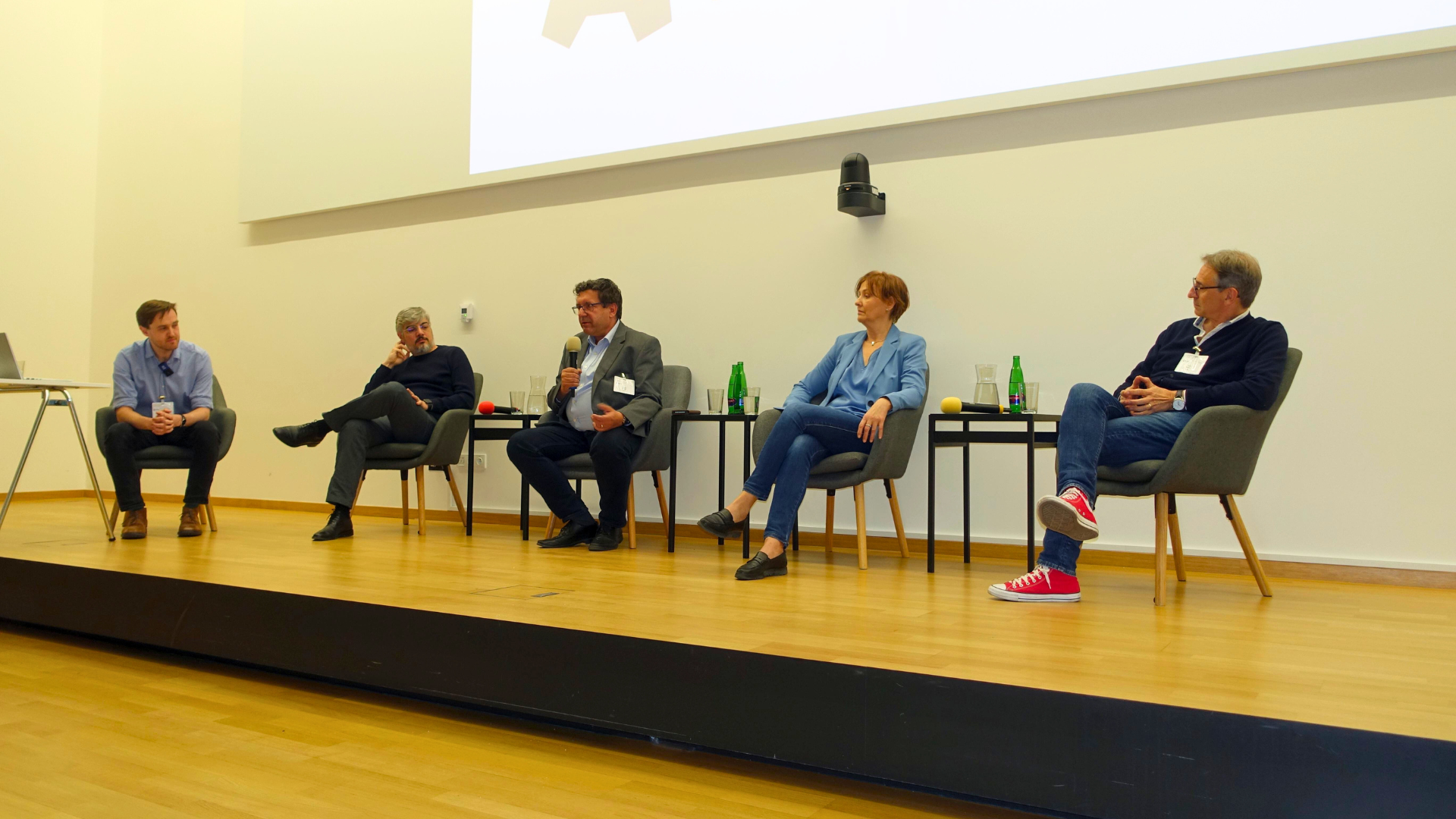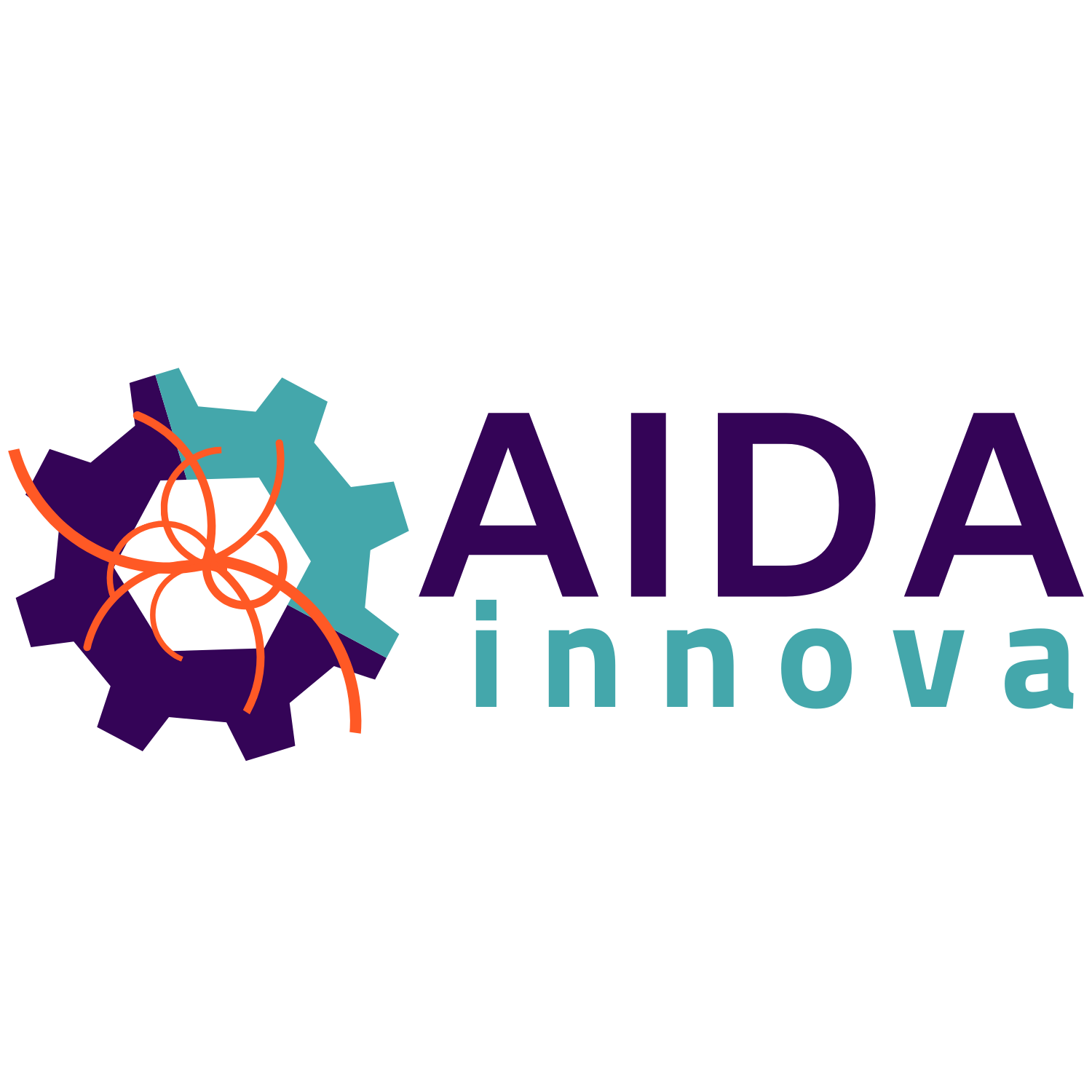
A panel discussion at the recent AIDAInnova annual meeting in Prague focused on the the mutual benefits of companies collaborating with researchers within the framework of large projects. From left to right: Thomas Brent, Ferdinando Giordano, Jaroslav Moravec, Ingrid Jonak-Auer, Paolo Petagna.
Large European projects are key to helping research and industry better understand the other sector’s needs and work processes, collaborators of the AIDAInnova project have said during a panel discussion at a recent consortium meeting.
Paolo Petagna, a CERN specialist in detector technologies and one of the speakers on the AIDAInnova Meets Industry panel, said that publicly funded projects bring benefits to both sides.
“For companies, it is very difficult to find and understand the technologies being investigated by research centres without digging through a lot of information. For researchers, they are not always aware of applications of technologies that they are working on beyond their own research,” he said.
“Frameworks such as the AIDAInnova project give the chance for both sides to meet and understand each other.”
The panel discussion took place in Prague at the Institute of Physics of the Czech Academy of Sciences on 6 May as part of the final annual meeting of the European Union-funded AIDAInnova project, which will come to a close later this year. The project, which kicked off in 2021, aims to advance particle detector technologies and facilities and involves 46 beneficiaries from the public and private sector.
The role of companies in the project has been key throughout.
Ingrid Jonak-Auer is a senior principal engineer of CSA devices and detectors at Austrian semiconductor manufacturer AMS OSRAM, and while she is a member of AIDAInnova’s Scientific and Industrial Advisory Panel, her company is not a beneficiary of the AIDAInnova project.
Sitting on the panel, she said that EU projects like AIDAInnova are valuable to European companies as they allow them to “keep up with the future”, and to find out what the most cutting-edge science is in a particular area.
Her thoughts were echoed by the other panellists, Jaroslav Moravec, managing director and the owner of Czech company FOTON, and Ferdinando Giordano, head of innovation and sales manager at Italian company CAEN. Both companies are beneficiaries of AIDAInnova.
Moravec, whose company specialises in power electronics, said that being involved in AIDAInnova is “not only about business, but about creating collaboration and staying in contact with people”.
Giordano stressed that working within EU projects provides companies with “knowledge transfer”, not just “technology transfer”. He said that even if the company does not benefit in the short term from being involved in the project, the insights they glean and the connections they make can turn into benefits later.
“Technologies [that are developed within the project] might even become appealing much later when a new application or consumer market is found,” he said.
Lessons learned: How industry and science can work together
The panellists outlined several ways in which industry and research can work better together through involvement in projects such as AIDAInnova.
One point made by Giordano is the importance of industry being involved from the very beginning stages of a project to better set out the needs from the researchers’ perspective, as well as the company’s.
The requirements of researchers are often very specific and tailored to suit one particular application within a project, while industry needs can be more generalised and adaptable. Working at an early stage in the project to ensure that any technology developed is as suitable as possible for both sides is vital, the panellists said.
This led to a point about “standardisation”, which Jonak-Auer said is an element that researchers and scientists should take into account when working with companies. With industry preferring to produce and sell products at scale, it is beneficial – for researchers and companies – to try to develop products that can suit a wider audience, rather than one specific need. For companies it means a better product, for researchers, it can mean access to cheaper technologies.
Petagna raised a final lesson, saying that it is crucial for companies and scientists to “know when to stop” when developing a technology. He said that it can be an endless job to constantly try to perfect one specific technology or product, and that sometimes it is better to draw a line under it and continue research and development on a new version.
The AIDAInnova annual meeting was also a chance for companies and researchers to connect and network. Following the panel, three companies, Pfeiffer Vacuum, Crytur and Foton, had the chance to display some of their products and explain their work to AIDAInnova participants.
Work has already begun on preparing the proposal for a new European call that could lead to the successor project of AIDAInnova. The project’s coordinator, Paolo Giacomelli, has spoken of his wish to make industry an even more key element of any future project.
